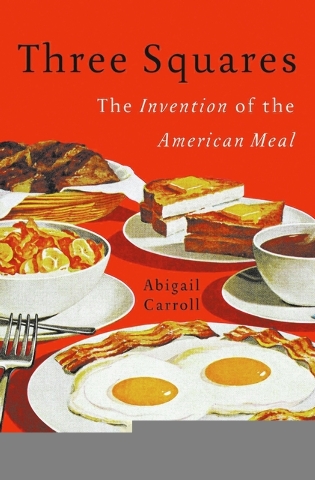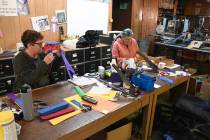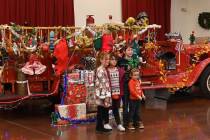The metamorphosis of mealtimes
You can just about taste it now.
Imagine: right out of the oven, the traditional dish Grandma used to make and now your sister does. Biscuits from a recipe your mom found in a magazine before you were born. New favorites brought to the family by new in-laws and old friends.
You feast because it’s a holiday, but what about the other days? Find out why your mealtime looks the way it does in “Three Squares: The Invention of the American Meal” by Abigail Carroll.
When the settlers first came to America some 400 years ago, they were reportedly aghast at Native American eating habits. Not only did tribal peoples ignore the idea of regular mealtimes, they also fasted – sometimes for “extended periods.”
That was unheard-of for the settlers, but it isn’t like they had the corner on mealtime rule-keeping. For them, eating was “generally informal, variable, and socially unimportant.” Tables and chairs were rare and, because knives were the only silverware used – if, indeed, silverware was used at all – mealtime was rather messy.
“For most, food was fuel,” says Carroll, “and eating was less about enjoying the pleasures of the palate… than replenishing work-weary bodies…”
Early eighteenth-century colonists, of course, were mostly British and “proud of it.” As the hardships of life eased, therefore, they reached for their English roots in the kitchen. Meat comprised most meals and was, in fact, often the only dish; aside from potatoes, vegetable consumption was uncommon.
By the late 1800s, industry had grown and the “shape of work” shifted. This led to the (larger) midday meal being pushed to a later time of day, to accommodate workers who toiled away from home. Dinner became a family event and “an indicator of one’s class status.” Dining rooms were ushered into homes in the Victorian era, and mealtime became reason for strict etiquette, elaborate place settings, and sumptuous foods, including the new mandatory course, dessert. Lunch was “invented” as a bridge between early breakfast and the later meal.
And breakfast? In the mid-1800s, it was still a meat-laden belly-filler that, it was believed, would aid digestion. Some thought, though, that all that food was not healthy, so an itinerant preacher and a health-conscious doctor cerealized things…
Now you’re feeling hungry, aren’t you? And curious, too, which means you must take a bite out of “Three Squares.”
In her introduction, author Abigail Carroll says that her initial intention with this book was to look at our habit of snacking, but she quickly realized that she couldn’t do that without looking at meals in general.
The two, as you might imagine, are tied together but they haven’t been (and might not be) for long. The reasoning – and the way meals have morphed – makes this a fascinating and lively look at all the things we put on a plate.
I ate it up, and I think the pop-culture lover, the cookbook fanatic, and Queen (or King) of the Kitchen will all want this on their shelf. For them, “Three Squares” is a book they’ll devour.
“Three Squares: The Invention of the American Meal” by Abigail Carroll. c.2013, Basic Books $27.99 / $31.00 Canada 304 pages
What’s a meal without something to wash it down? In “Fizz: How Soda Shook Up the World” by Tristan Donovan, you’ll read how our love of bubbly soft drinks began, how it became an American treat, how it’s weaved into our culture, how it changed nations, and why it’s blamed so widely for health issues. This book is a snacker’s dream, a soda-lover’s delight, a historian’s pleasure, and something that’ll make you say “Cheers!”
“Fizz: How Soda Shook Up the World” by Tristan Donovan. c.2013, Chicago Review Press $17.95 / $19.95 Canada 282 pages





















